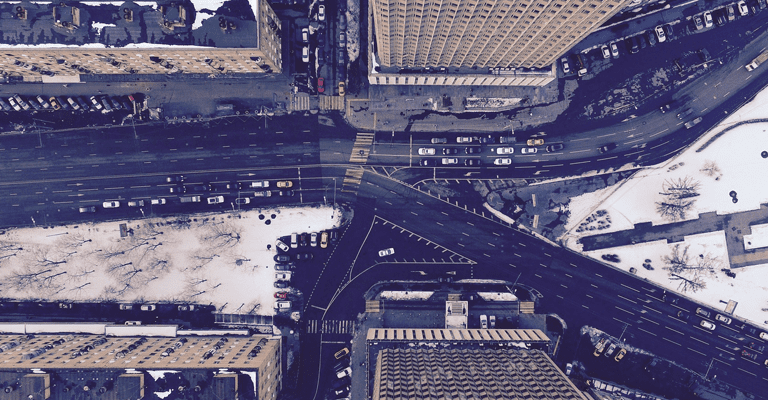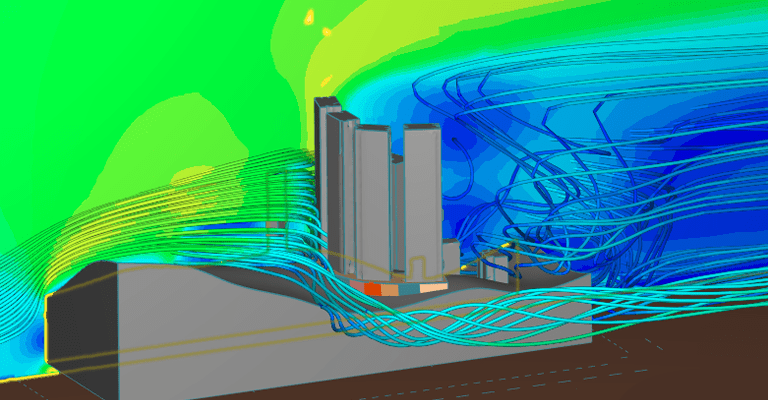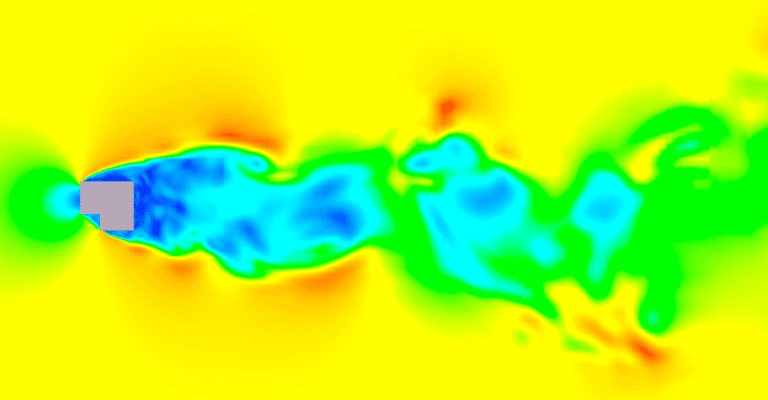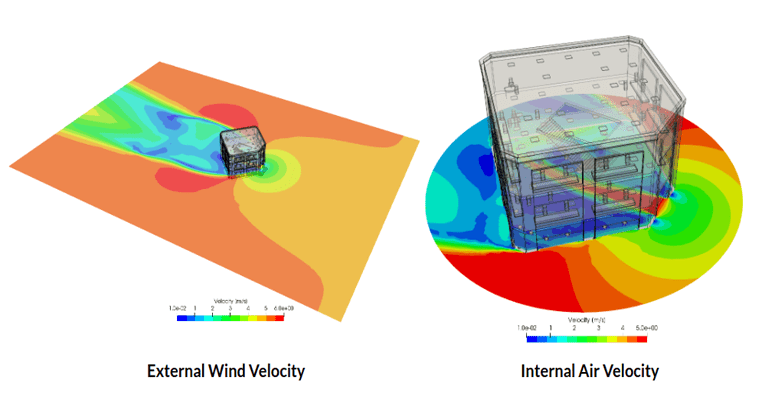Fluctuating air streams caused by weather patterns can have significant interactions with the built environment. These air streams have an effect on every built structure, from the wind conditions of the surrounding roads, to pedestrian wind comfort, and even on the internal ventilation system of a building. All of these factors are addressed in building aerodynamics.
Building Aerodynamics 101
Possibly the most crucial aspects to consider when designing a new structure is building aerodynamics. The integrity and stability of a building are reliant on evaluating the wind loads at critical points, and in turn, rely on the exactitude of a checklist of items. Engineers need to experiment with and determine the following factors:
- Wind-induced pressure of facades
- Influence on pedestrian level environment
- Influence on wind conditions of surrounding built environment
- Natural ventilation availability and feasibility
- Thermal comfort within the building
These variables play into non-technical actualities of building as well.
Economic Considerations to Building Aerodynamics
Economic considerations encompass both the initial overheads, material, and construction costs based on the building’s design as well as the projected economic success of the structure’s planned function. No matter what the buildings’ intended use is, a pleasant wind environment from a pedestrian level is key to its economic success.

It’s easily seen that when the weather is bad, so is business. Now imagine this adverse weather was perpetuated by an especially windy street in a well-known shopping area. If wind velocity surpasses 10 km/h, it becomes uncomfortable to read a book or newspaper on a bench outside. If this type of weather is fixed in a particular urban area, the surrounding storefronts and business centers would see less foot traffic in general, and experience even less in inclement weather conditions. Wind doesn’t just affect ground level circumstances but can also negatively impact apartment/hotel terraces and balconies, and even cause problems during construction for new buildings. The wind comfort generated through building aerodynamics can impact the economic success of establishments, lead to business turnover, and all and all have a significant impact on the economic climate.
Urban Landscape Considerations
The landscape of the urban environment must be accounted for in addition to the built environment and climate. For example, hilly terrains will create more uncertainty and fluctuation in weather patterns than flat surface areas. This project in particular, from SimScale, uses CFD to analyze the wind comfort of a city characterized by very hilly terrain. The case study explains how you can evaluate gathered results from velocity and pressure plots, using different cutting planes to locate high-pressure stagnation points upstream of the city and even low-pressure areas on the back sides of buildings. It provides a great example of how using online simulation you can easily identify areas of wind recirculation, vortices, and overall discomfort creating an overall unideal environment.

Static and Dynamic Building Wind Loads
While static loads on a building are defined as being independent of time and therefore constant such as the force of gravity or the weight of the structure itself, dynamic loads are time-dependent where the load force can be accelerating or deaccelerating. Earthquakes, snow loads, and wind loads are all classified as dynamic. Static loads play less of a role in the aerodynamics of a building as they only have fixed solutions. Dynamic loads, such as wind loads, are more complex as they can have a multitude of solutions and consequences to the aerodynamics of a building.
In the design phase, evaluating the vortex shedding caused by wind loads on buildings is necessary for determining their potential for inducing oscillating crosswind forces with a certain frequency. If this frequency coincides with the natural frequency of the structure, resonance may occur, leading to damage or failure of the structure.

As dynamic wind loads can vary in velocity and direction, online simulation is a great alternative to physical prototyping. This public project explains how studying the pressure loads on the structure and facade design along with determining and mitigating the dynamic wind load effects can be done using SimScale.
Building Ventilation
Building aerodynamics influence ventilation functionality within a building. Building ventilation is necessary to interchange old and fresh air in order to control temperatures, reduce moisture and odor buildup, and create airflow that ultimately dictates thermal comfort for inhabitants. These designs are typically classified into two categories: natural and mechanical ventilation.
If the aerodynamics of the structure allows for natural ventilation via vents and windows facilitating the movement of air, this is an often preferred and energy efficient solution. However, in some circumstances, mechanical ventilation is required. This could be the case for buildings situated where local air quality is poor, the existing urban environment is too dense and blocks natural wind force, and conditions where the building is too deeply situated to ventilate from the outside environment.

This project, featuring the above simulation image, provides a great example of how natural ventilation systems can be assessed by evaluating the external and internal wind velocity of a building’s design. Through online simulation with SimScale, you can easily determine if your building’s aerodynamic properties allow for either natural or mechanical systems, and even run multiple design iterations in parallel to save valuable planning time.
Conclusion
As the impact of wind has a direct consequence on pedestrian comfort, economic success, and building aerodynamics, wind analysis conducted via computational fluid dynamics (CFD) simulations is crucial in addressing and mitigating design issues. A multidisciplinary method using online simulation first and then validating with wind tunnel testing can bridge the gap between architectural design and engineering wind comfort solutions. Using online simulation for building aerodynamics is proven to be an effective method for final verification, as well as aiding future research and wind experiments that altogether contribute to vast improvements in the environmental quality of urban areas along with the efficiency of the urban planning process as a whole.
Download our ‘Tips for Architecture, Engineering & Construction (AEC)’ white paper to learn how to optimize your designs!



